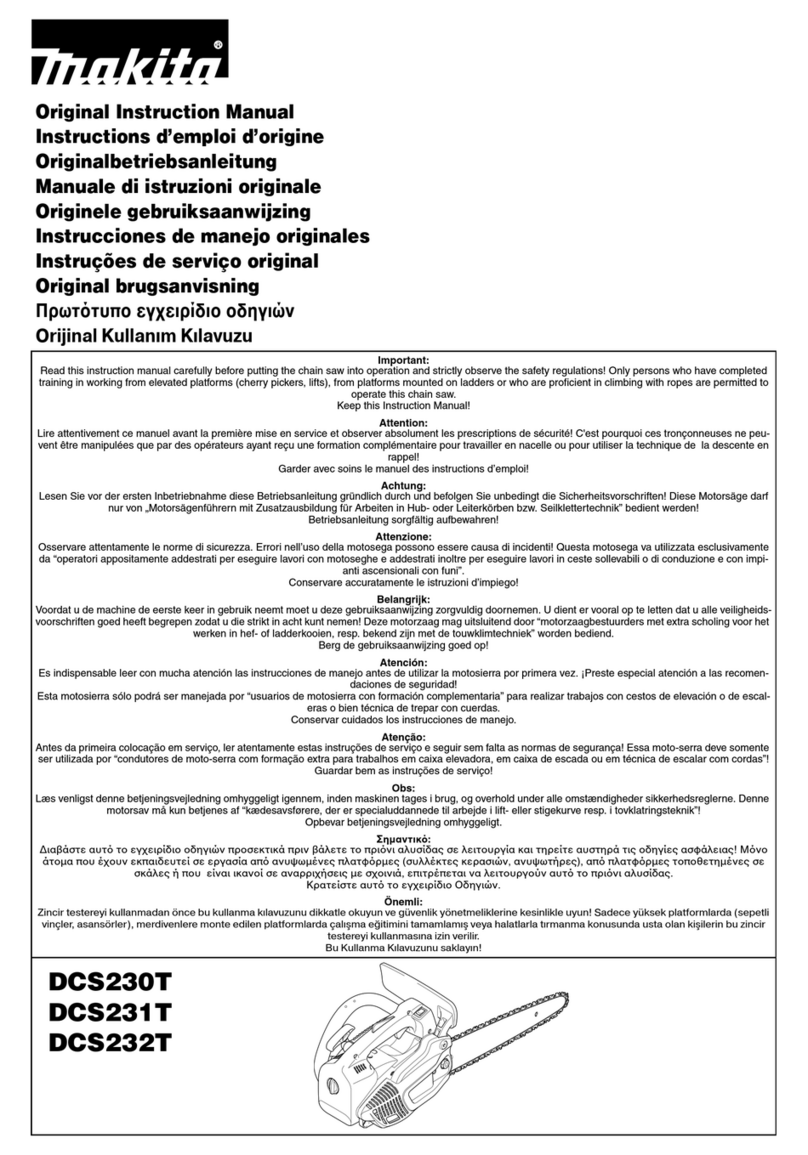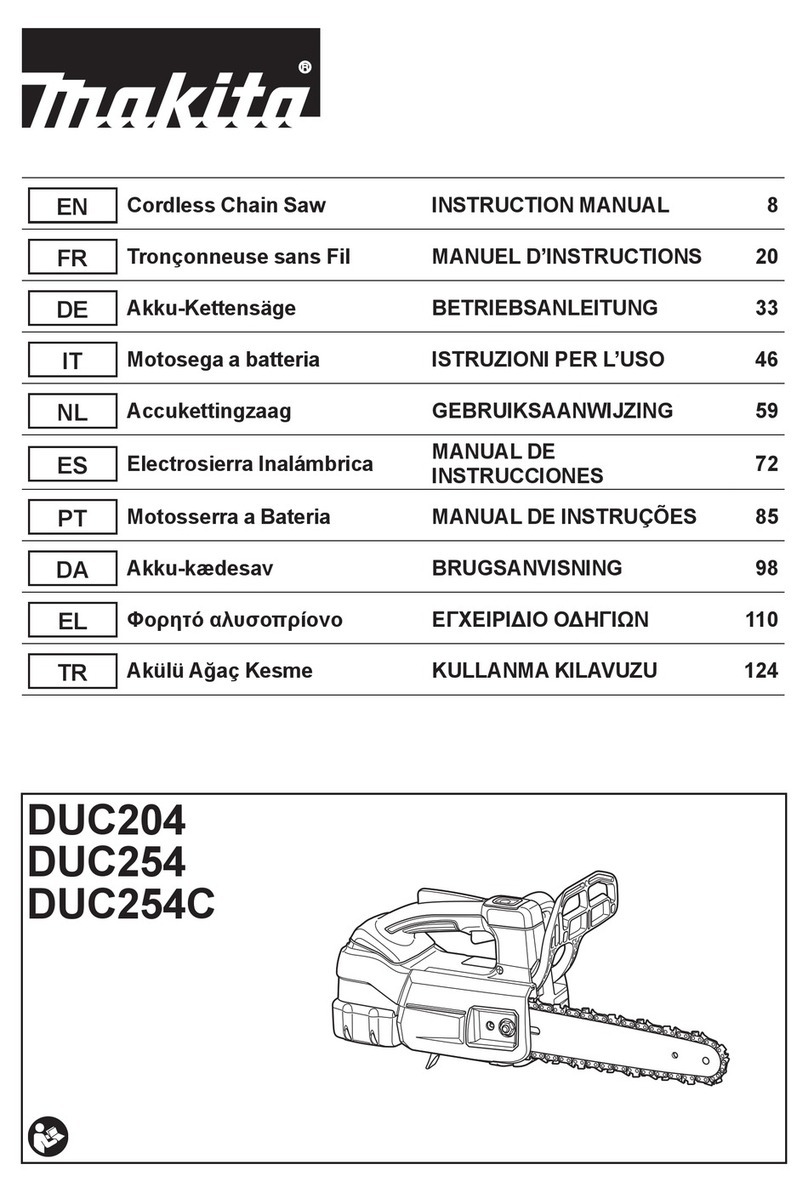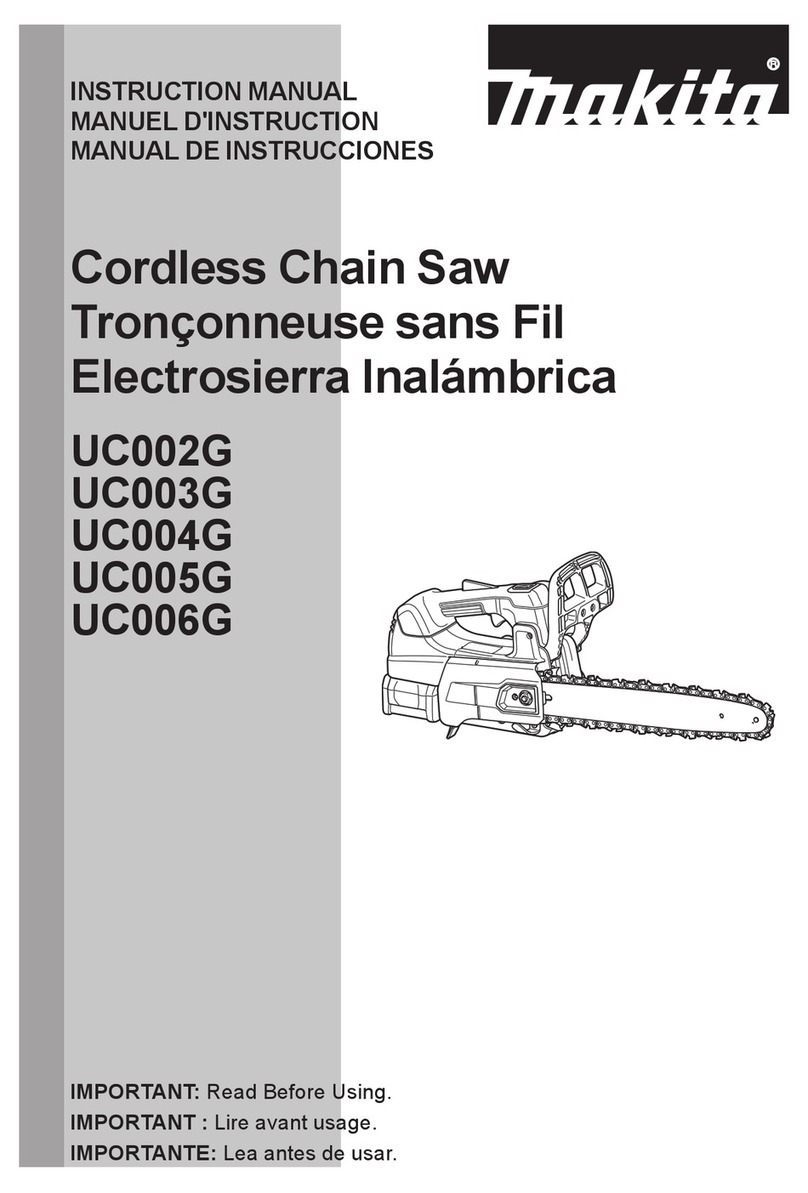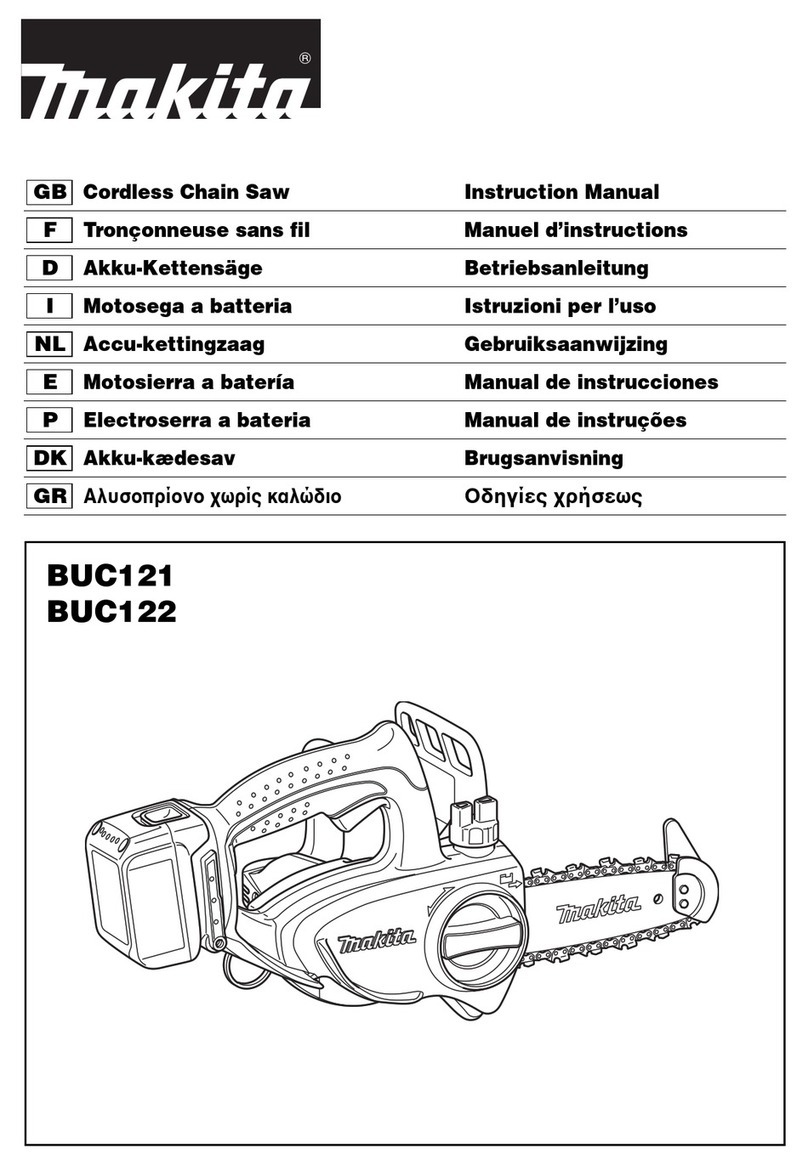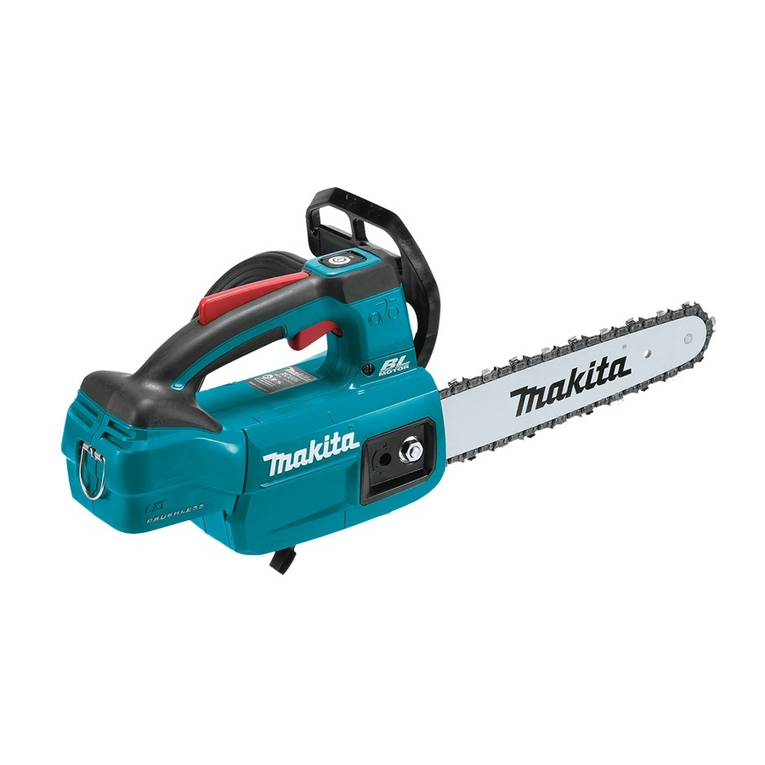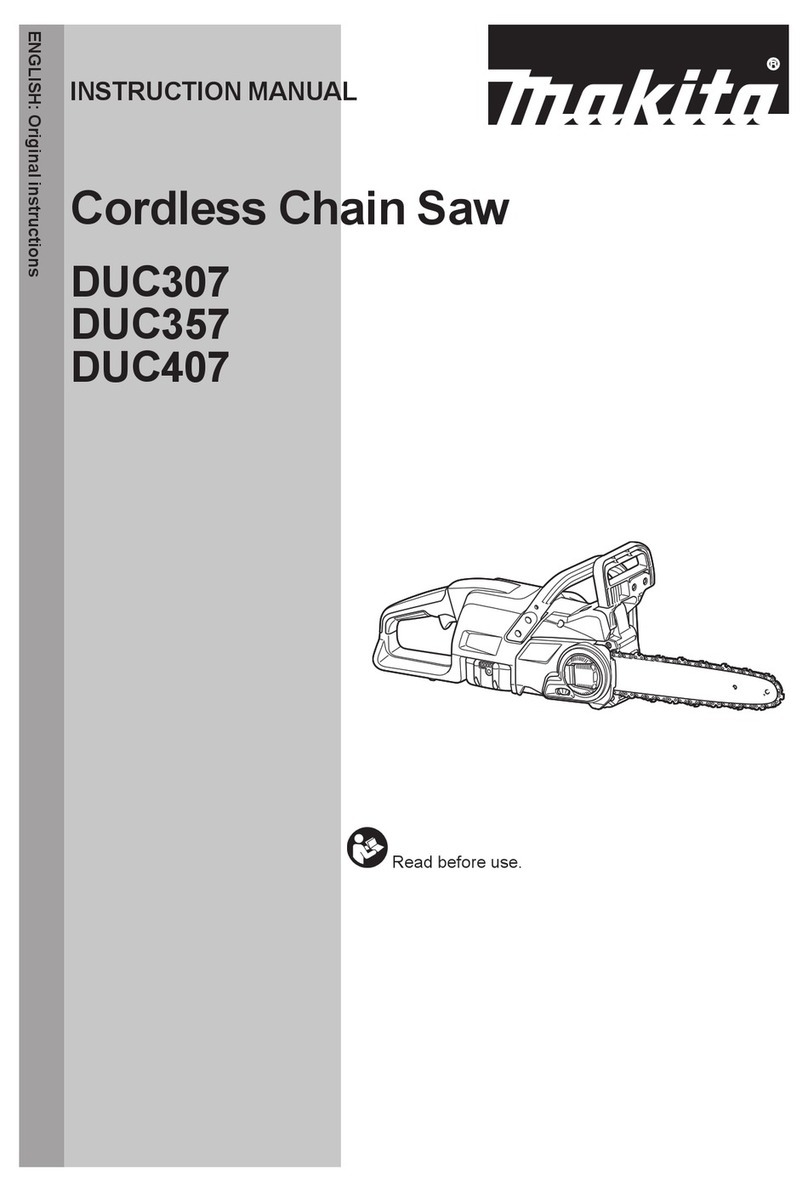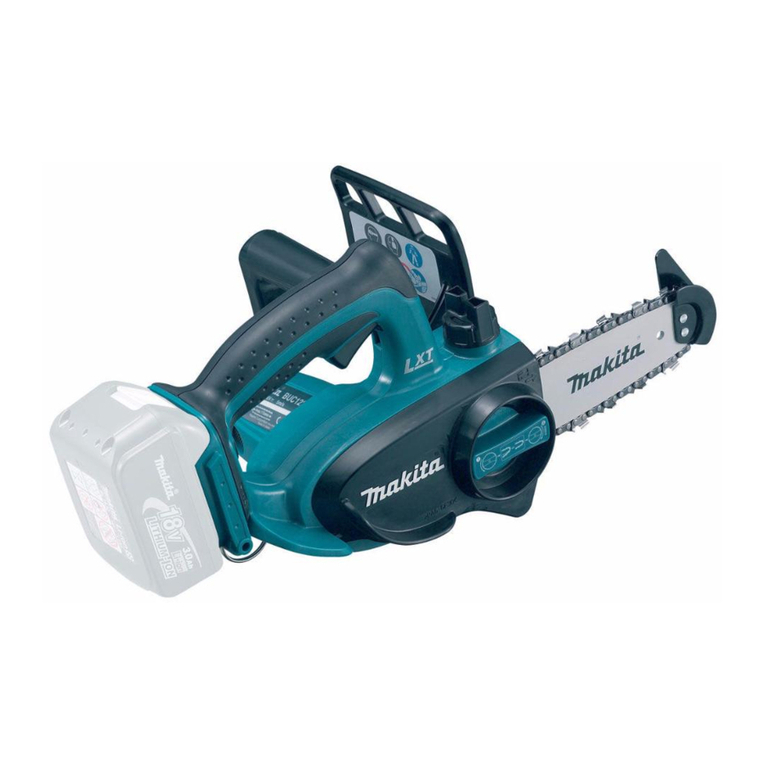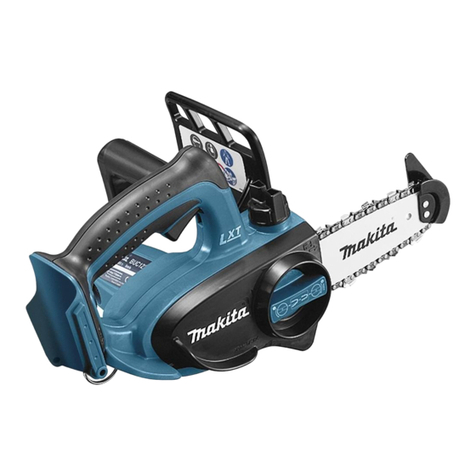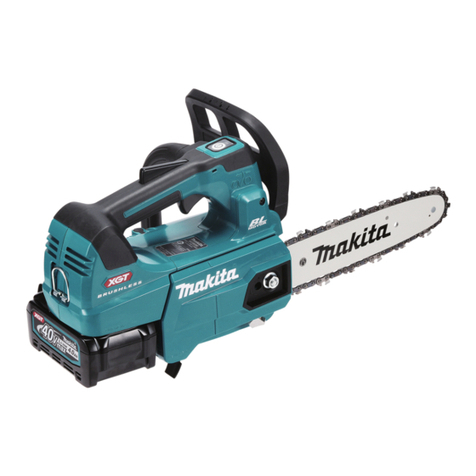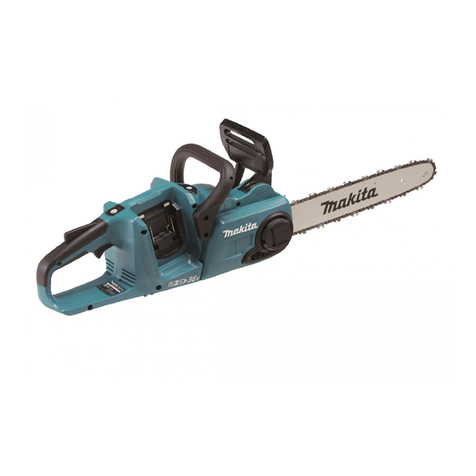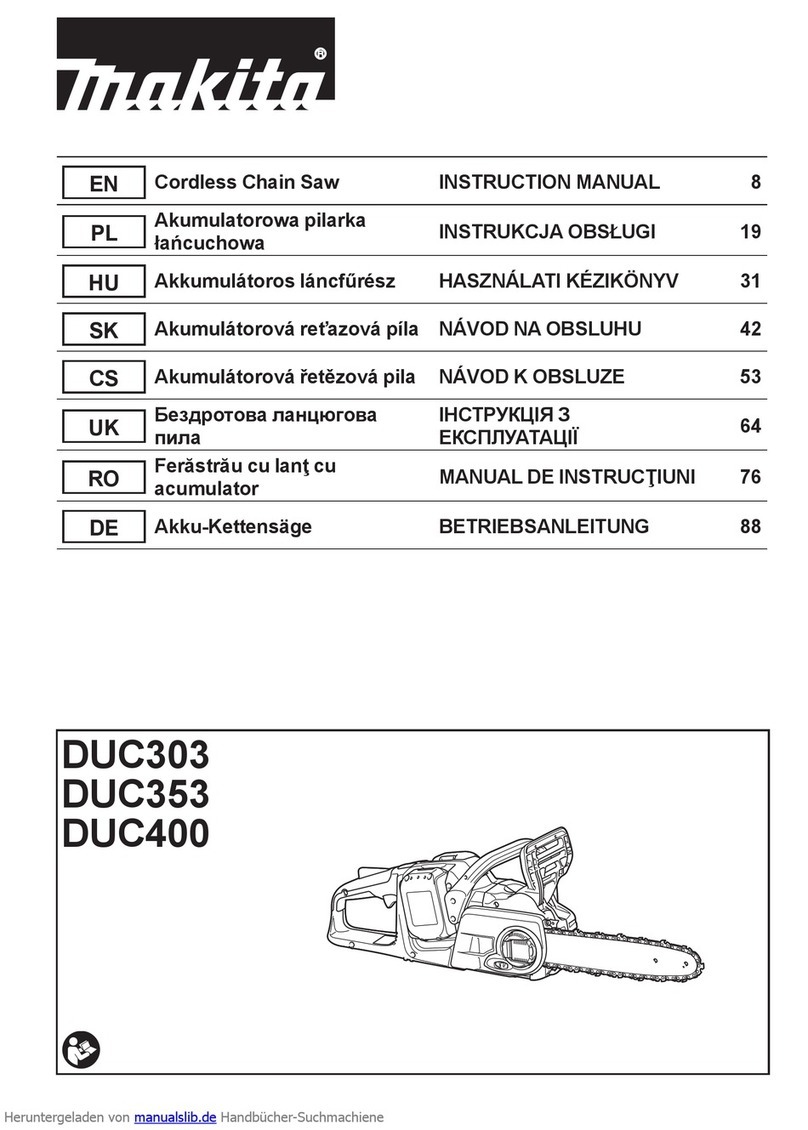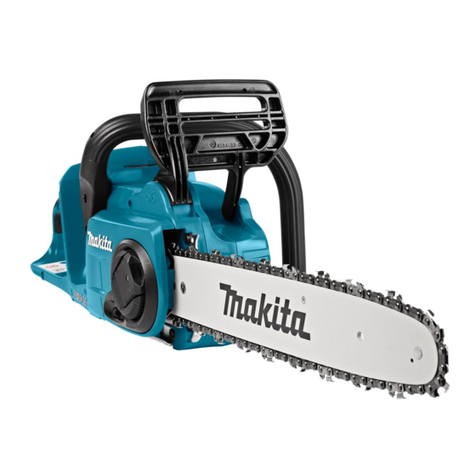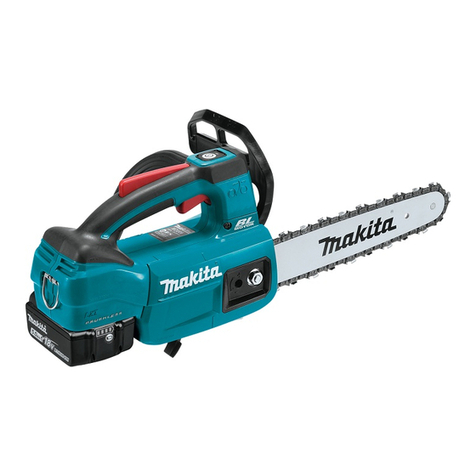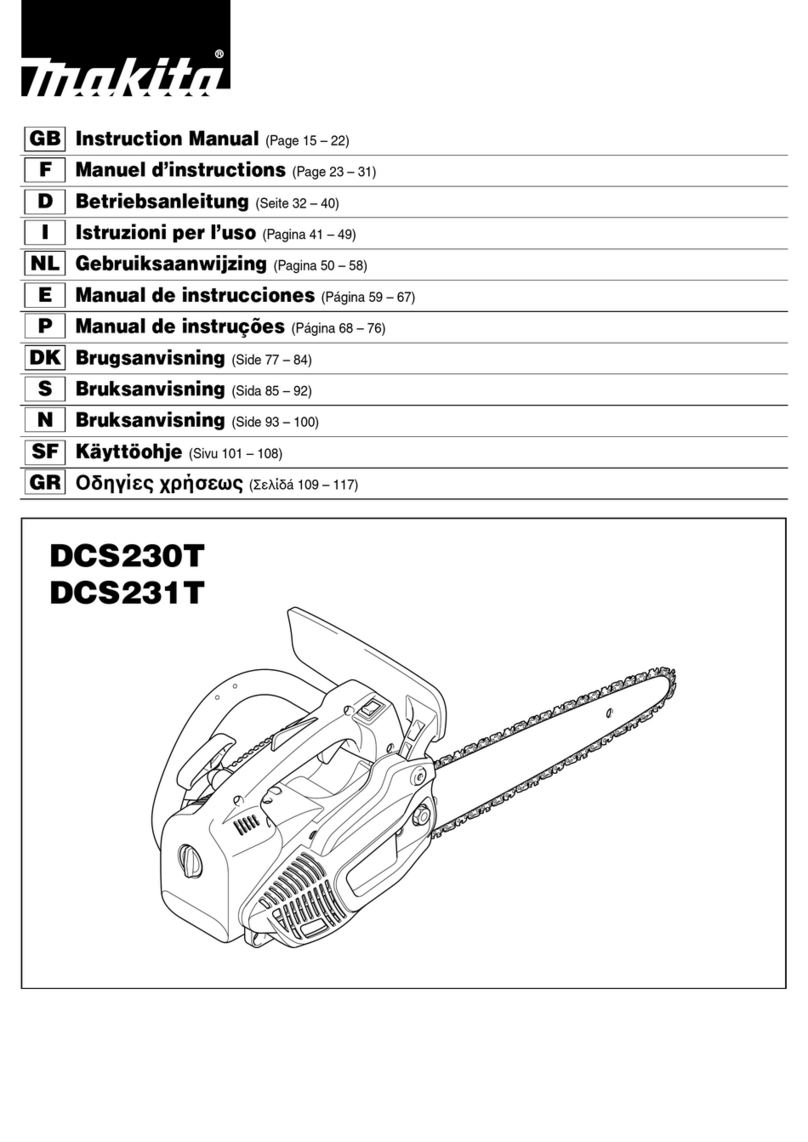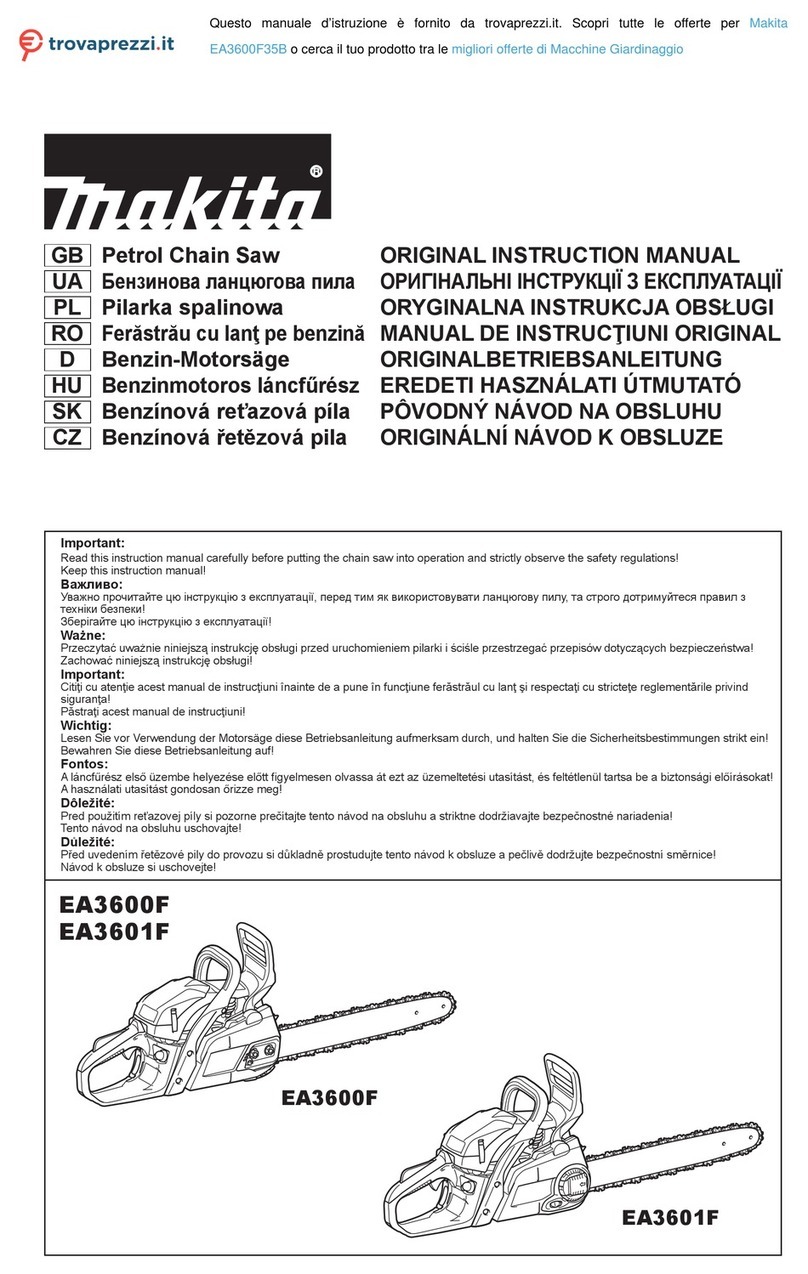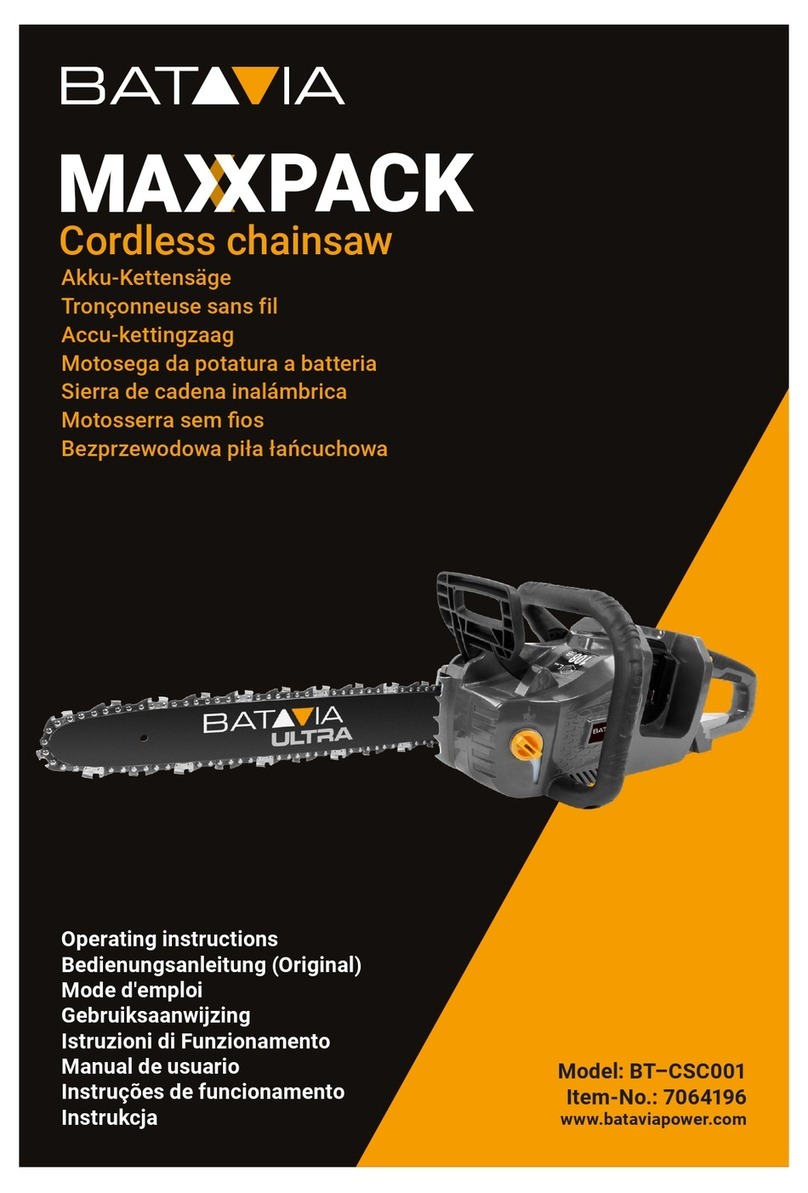9.
IO.
11.
12.
13.
14.
15.
16.
Use Safety Glasses
Also
use safety footwear; snug fitting clothing; protective gloves; hearing
and head protection.
Carrying Saw
Carry the chain saw by the front handle
with
the saw stopped, finger off
the switch, the guide bar and saw chain to the rear.
Maintain Chain Saw With Care
Inspect chain saw cords periodically and if damaged, have repaired by
authorized service facility. Keep cord clear of the chain and operator at all
times. Never carry saw bythe cord or pull
it
todisconnectfrom receptacle.
Keep cordfrom oiland sharp edges. Inspectextension cords periodically and
replace
if
damaged. Keeptools sharp and clean for better and safer perfor-
mance. Follow instructions for lubricating and changing accessories. Keep
handles dry, clean, and free from oil and grease.
Disconnect Chain Saw
Disconnect chain saw when not
in
use. beforeservicing, and when changing
accessories and attachments, such as saw chain and guard.
Outdoor Use Extension Cords
Use only extension cords intended for use outdoors and
so
marked.
Stay Alert
Watch what you are doing. Use common sense.
Do
not operate chain saw
whenyouaretired. Keepall partsof the bodyaway fromthe saw chain when
the motor is operating. Before you start the saw, make sure the saw chain
is not contacting anything.
Check Damaged Parts
Before further use of the chain saw, a guard or other part that is damaged
should be carefully checked to determine that
it
will operate properly and
perform itsintended function. Check for alignment of movingparts, binding
of movingparts, breakage of parts, mounting, andany other conditionsthat
may affect its operation. A guard or other part that is damaged should be
properly repaired or replaced by an authorized service center unless other-
wise indicatedelsewhere
in
thisinstruction manual. Havedefective switches
replaced by authorized service center.
Do
not use chain saw if switch does
notturn
it
onand off.
Do
notoperate a chain saw that isdamaged, improperly
adjusted, or isnot completely and securely assembled. Be sure that the saw
chain stops moving when the trigger is released.
Guard Against Kickback
WARNING: KICKBACK may occur when the nose or tip of the guide bar
touches an object, or when the wood closes
in
and pinches the saw chain
in
the cut. Tip contact
in
some cases may cause a lightning fast reverse
reaction, kickingthe guide bar up and back towards the operator. Pinching
the saw chain along the top of the guide bar may pushthe guide bar rapidly
back towards the operator. Either of these reactions may cause youto lose
control of the saw which couldresult
in
serious injury touser. The following
precautions should be followed to minimize kickback.
3
